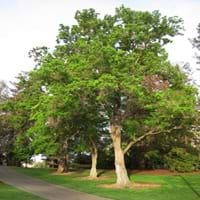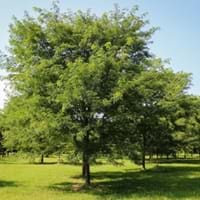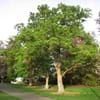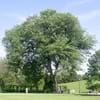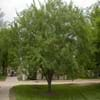Life Span
Perennial
Annual
Origin
Eastern Asia, China
China, Korea
Types
Candleberry tree
Sophora japonica
Habitat
Saline Soils, Upland, Upland soils
Humid climates, Loamy soils, Low annual rainfall regions, Wet ground, Woods
USDA Hardiness Zone
8-10
5-9
Sunset Zone
H2, 8, 9, 12, 13, 14, 15, 16, 18, 19, 20, 21
2a, 2b, 3a, 3b, 4, 5, 6, 7, 8, 9, 10, 11, 12, 13, 14, 15, 16, 17, 18, 19, 20, 21, 22, 23, 24
Habit
Oval or Rounded
Oval or Rounded
Minimum Height
Not Available
Minimum Width
Not Available
Flower Color
Yellow
White, Light Green
Flower Color Modifier
Bicolor
Bicolor
Fruit Color
White, Ivory
Green
Leaf Color in Spring
Green
Dark Green
Leaf Color in Summer
Green
Dark Green
Leaf Color in Fall
Yellow, Red, Orange
Yellow, Dark Green
Leaf Color in Winter
Not Available
Not Available
Leaf Shape
Heart-shaped
Elliptic
Plant Season
Spring, Summer, Fall
Spring, Summer, Fall, Winter
Sunlight
Full Sun
Full Sun
Type of Soil
Clay, Loam, Sand
Clay, Loam, Sand
The pH of Soil
Acidic, Neutral, Alkaline
Acidic, Neutral, Alkaline
Soil Drainage
Average
Average
Tolerances
Cold climate, Drought, Pollution, Salt
Pollution, Drought, Soil Compaction
Where to Plant?
Ground
Ground
How to Plant?
Grafting, Seedlings, Stem Planting, Transplanting
Seedlings, Transplanting
Plant Maintenance
Medium
Medium
Watering Requirements
Average Water Needs, Medium, Requires watering in the growing season
occasional watering once established, Requires watering in the growing season
In Summer
Lots of watering
Less Watering
In Spring
Moderate
Less Watering
In Winter
Average Water
Drought Tolerant
Soil pH
Acidic, Neutral, Alkaline
Acidic, Neutral, Alkaline
Soil Type
Clay, Loam, Sand
Clay, Loam, Sand
Soil Drainage Capacity
Average
Average
Sun Exposure
Full Sun
Full Sun
Pruning
Remove damaged leaves, Remove dead leaves, Remove dead or diseased plant parts, Remove deadheads
Prune when young, Remove dead branches
Fertilizers
fertilize in growing season, Less fertilizing, Nitrogen
All-Purpose Liquid Fertilizer
Pests and Diseases
Insects, Red blotch
Leaf spot, Red blotch, Woodpecker feeding
Plant Tolerance
Cold climate, Drought, Salt
Drought, Dry soil, Soil Compaction
Flowers
Insignificant
Showy
Flower Petal Number
Single
Single
Foliage Texture
Medium
Medium
Foliage Sheen
Matte
Matte
Attracts
Not Available
Bees, Hummingbirds, Woodpeckers
Allergy
Nausea, Toxic, Vomiting
Eczema, Nausea, Swelling in the face
Aesthetic Uses
Landscape Designing
Bouquets, Landscape Designing, Showy Purposes
Beauty Benefits
No Beauty Benefits
Nourishes scalp, Restores Hair Colour, Stops hair loss
Environmental Uses
Absorbs greenhouse gases, Absorbs huge amounts of CO2, Air purification, Amazing growth rate, Erosion control, Food for insects, Forms dense stands, Nesting sites for birds, No fertilizer, pesticides, or herbicides needed, Prevent Soil Erosion, Shadow Tree, Shelter for wildlife, Soil protection, soil stabilisation, Used to establish native woodland, Very little waste, Wildlife, Windbreak
Air purification, Erosion control, Forms dense stands, Shadow Tree
Medicinal Uses
Boils
Diuretic, Fever, Muscle Pain, Vomiting
Part of Plant Used
Fruits, Leaves, Seeds
Bark, Leaves
Other Uses
Employed in herbal medicine, Showy Purposes, Used as firewood, Used for its medicinal properties
Used as a laxative, Used as firewood, Used as Ornamental plant, Used in construction
Used As Indoor Plant
No
No
Used As Outdoor Plant
Yes
Yes
Garden Design
Feature Plant, Shade Trees, Street Trees
Shade Trees, Street Trees, Topiary / Bonsai / Espalier
Botanical Name
TRIADICA sebifera
SOPHORA japonica
Common Name
Chinese Tallow
Chinese Scholartree, Japanese Pagoda
In Hindi
चीनी तेल
Gobur champ
In German
chinesisch Talg
Japanischer Schnurbaum
In French
chinesisch Talg
Styphnolobium japonicum
In Spanish
suif chinois
Styphnolobium japonicum
In Greek
κινέζικο ζωικό λίπος
Styphnolobium japonicum
In Portuguese
sebo chinesa
Styphnolobium japonicum
In Polish
chiński łój
Perełkowiec japoński
In Latin
Chinese adipe
Styphnolobium japonicum
Phylum
Embryophyta
Angiosperms
Class
Magnoliopsida
Magnoliopsida
Order
Malpighiales
Fabales
Family
Euphorbiaceae
Fabaceae
Genus
Triadica
Styphnolobium
Clade
Angiosperms, Eudicots, Rosids
Angiosperms, Eudicots, Rosids
Tribe
Hippomaneae
Sophoreae
Subfamily
Euphorbioideae
Faboideae
Number of Species
Not Available
Not Available
Season and Care of Chinese Tallow and Japanese Pagoda
Season and care of Chinese Tallow and Japanese Pagoda is important to know. While considering everything about Chinese Tallow and Japanese Pagoda Care, growing season is an essential factor. Chinese Tallow season is Spring, Summer and Fall and Japanese Pagoda season is Spring, Summer and Fall. The type of soil for Chinese Tallow is Clay, Loam, Sand and for Japanese Pagoda is Clay, Loam, Sand while the PH of soil for Chinese Tallow is Acidic, Neutral, Alkaline and for Japanese Pagoda is Acidic, Neutral, Alkaline.
Chinese Tallow and Japanese Pagoda Physical Information
Chinese Tallow and Japanese Pagoda physical information is very important for comparison. Chinese Tallow height is Not Available and width Not Available whereas Japanese Pagoda height is 1,220.00 cm and width 1,220.00 cm. The color specification of Chinese Tallow and Japanese Pagoda are as follows:
Chinese Tallow flower color: Yellow
Chinese Tallow leaf color: Green
Japanese Pagoda flower color: White and Light Green
- Japanese Pagoda leaf color: Dark Green
Care of Chinese Tallow and Japanese Pagoda
Care of Chinese Tallow and Japanese Pagoda include pruning, fertilizers, watering etc. Chinese Tallow pruning is done Remove damaged leaves, Remove dead leaves, Remove dead or diseased plant parts and Remove deadheads and Japanese Pagoda pruning is done Prune when young and Remove dead branches. In summer Chinese Tallow needs Lots of watering and in winter, it needs Average Water. Whereas, in summer Japanese Pagoda needs Less Watering and in winter, it needs Drought Tolerant.
